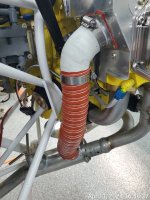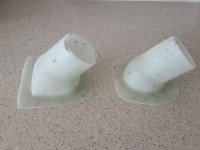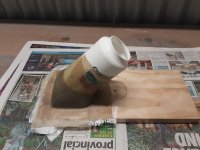For my vertical draft engine, adding this 60 degree elbow eliminates the need for the clamp to keep the SCAT which runs between baffles and heat muff from rubbing the engine mount weldment. I simply find this more elegant. Adds to build time. Increases composite fabrication skills. Gratifies the soul.
For RV-7 and -7A vertical draft (which almost always means carbureted, exception is IO-320-D1A which is vertical draft, and my Continental Titan which is SDS) ref dwg OP-29 (I have rev 2). It’s not well shown but the clamp in zone A10 keeps the scat tube from rubbing the engine mount weldment.
For RV-7 and 7A horizontal induction cabin heat air is taken not from the right rear baffle but from the right front inlet ramp of the baffles so the situation is different, ref OP-33 (I have rev 2). In this dwg such a clamp is shown more clearly in zone C9 although it’s for the SCAT from heat muff to cabin heat valve.
None of this is cast in stone due to variations in exhaust, heat muff, mufflers, space-time continuum and I don’t know what all else.
.








